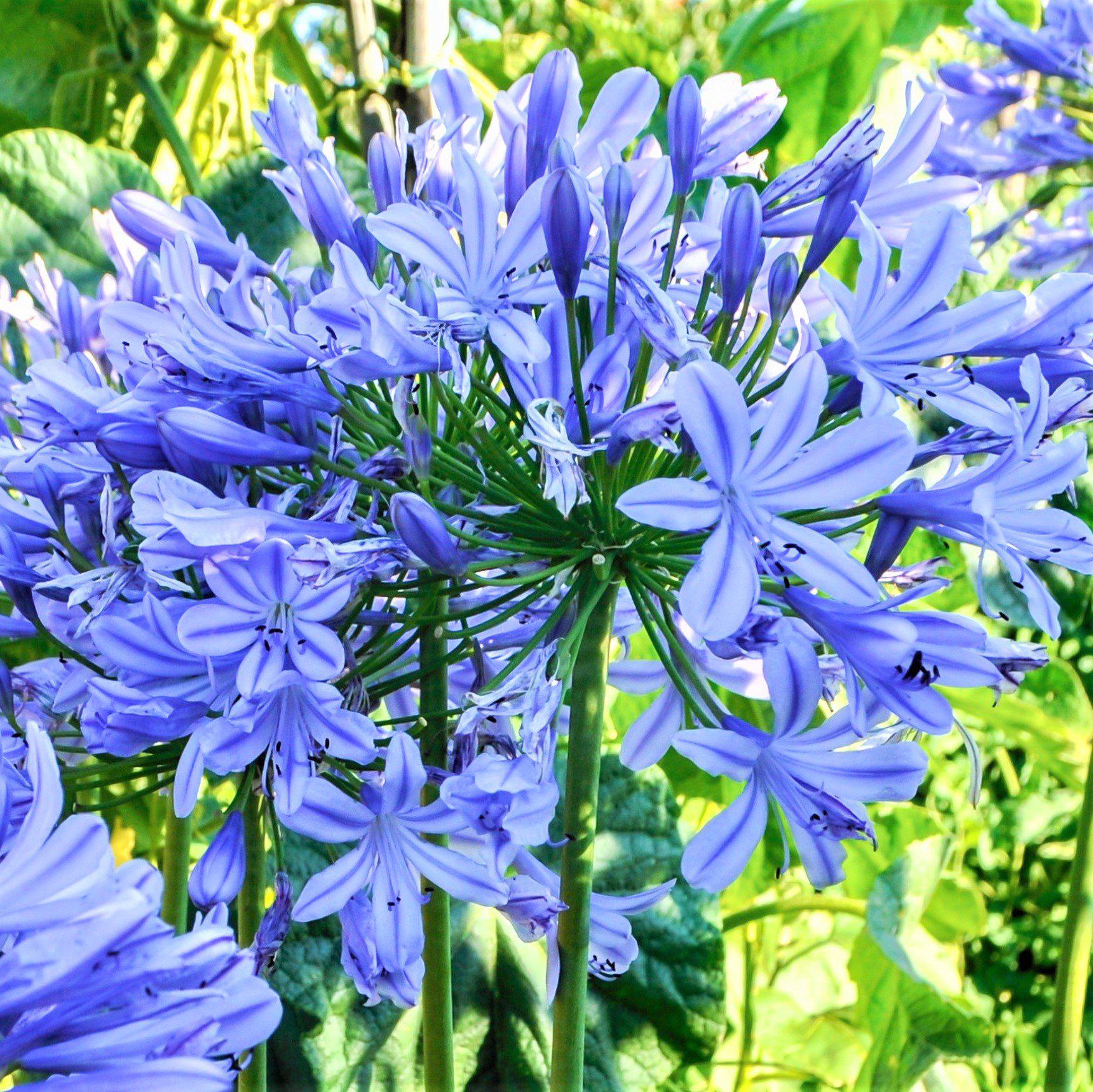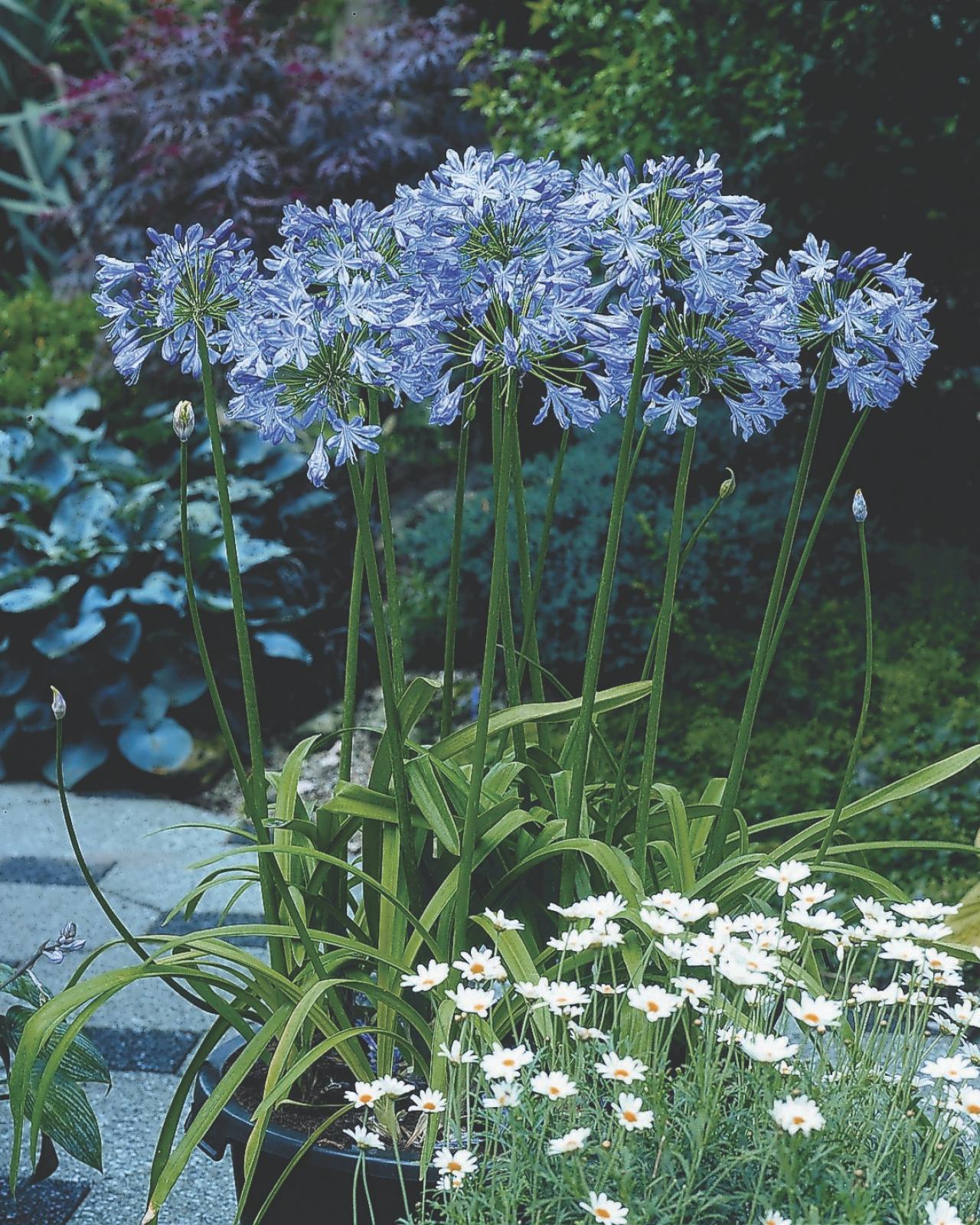Seasonal Agapanthus Treatment: Planning For Winter Months and Summer season
Seasonal Agapanthus Treatment: Planning For Winter Months and Summer season
Blog Article
The Ultimate Agapanthus Manual: Everything You Required to Find Out About Planting, Preserving, and Taking Pleasure In These Beautiful Blossoms
Within the realm of gardening, couple of blossoms show the beauty and appeal fairly like agapanthus. The Ultimate Agapanthus Manual serves as a thorough overview to help you navigate the world of these magnificent flowers, covering every little thing from picking the perfect variety for your yard to grasping the art of maintenance and care.

Agapanthus Selections: Picking the Right One
When choosing an Agapanthus range, it is important to consider variables such as flower shade, hardiness, and height to make certain the right fit for your garden. The bloom shade of Agapanthus varies from tones of purple and blue to white and also bi-colored blossoms, offering a wide range of options to complement your garden's color plan. Furthermore, height is an essential element to think about as Agapanthus varieties can range from dwarf ranges that stay under a foot tall to bigger varieties that can reach up to four feet in elevation.

Growing Tips for Healthy And Balanced Development
To guarantee successful development and advancement of Agapanthus plants, proper growing techniques are vital for establishing a healthy and balanced structure. Begin by selecting an appropriate area that gets full sun to partial shade, as Agapanthus grows in these conditions.
When planting Agapanthus, make sure the crown-- where the roots satisfy the stems-- is at soil level (Agapanthus). Water recently planted Agapanthus deeply to assist the roots develop themselves.
Routine watering is crucial, especially during the growing season, to promote healthy and balanced blooming. Feed Agapanthus in the spring with a balanced plant food to sustain durable development and vibrant blooms. By following these planting pointers, you can take pleasure in flourishing and attractive Agapanthus plants in your yard.
Necessary Care and Maintenance Practices
Having developed a strong foundation via appropriate planting strategies, the following critical action for ensuring the health and vigor of Agapanthus plants lies in applying crucial care and maintenance methods. Agapanthus plants benefit from a well balanced fertilizer application in the spring to sustain healthy and balanced growth and vivid flowers.
Deadheading invested flowers advertises continuous growing and stops the plant from expending energy on seed production. Furthermore, splitting jampacked clumps every few years revitalizes the plants, promotes much better flowering, and avoids congestion. Agapanthus plants are generally low-maintenance yet may take advantage of regular assessment for conditions and insects. Slugs and snails can be controlled with Click Here hand-operated removal or environmentally pleasant parasite control methods. By complying with these important care and upkeep practices, gardeners can appreciate the beauty of Agapanthus plants every year (Agapanthus).
Making Best Use Of Blossoms: Feeding and Watering
Executing a tactical feeding and watering program is crucial for making the most of the flowering capacity of Agapanthus plants throughout the growing period. Agapanthus plants require a balanced approach to feeding and watering to produce an abundance and flourish of stunning flowers. Utilizing a balanced fertilizer with a higher potassium content can advertise blossom production when it comes to feeding. It is recommended to apply a slow-release plant food at the start of the expanding season and afterwards supplement with a fluid fertilizer every 4-6 weeks during the active growth period.
In regards to watering, Agapanthus plants like regularly moist yet well-drained dirt. Water deeply and infrequently to urge deep root development and stop waterlogging, which can result in root rot. During home the warm summertime, increase watering regularity to guarantee the plants get a sufficient quantity of wetness. Mulching around the plants can help maintain soil moisture and manage soil temperature level. By complying with a regular feeding and watering regular, you can make sure that your Agapanthus plants thrive and create an excellent display of flowers.
Imaginative Ways to Enjoy Agapanthus Flowers
Cut Agapanthus blossoms can be prepared in a flower holder on their combined or own with other complementary blossoms to add a touch of style to any kind of space. Planting Agapanthus in clusters along borders or paths can produce a striking aesthetic effect in your garden. Additionally, you can utilize Agapanthus flowers to include a pop of color to your patio area or veranda by putting potted plants tactically to brighten up your outdoor living rooms.

Conclusion
In verdict, agapanthus blossoms are a beautiful enhancement to any kind of yard, with a selection of types to select from. Get creative with how you enjoy agapanthus, whether in arrangements, setups, or as a focal point in your yard.

Agapanthus plants profit from a website here balanced plant food application in the spring to support healthy and balanced development and dynamic blossoms.
Applying a tactical feeding and watering program is crucial for taking full advantage of the growing potential of Agapanthus plants throughout the growing period. Agapanthus plants call for a balanced method to feeding and watering to grow and produce an abundance of lovely blossoms. Additionally, you can use Agapanthus blossoms to add a pop of color to your outdoor patio or porch by positioning potted plants strategically to brighten up your outdoor living areas.
Report this page